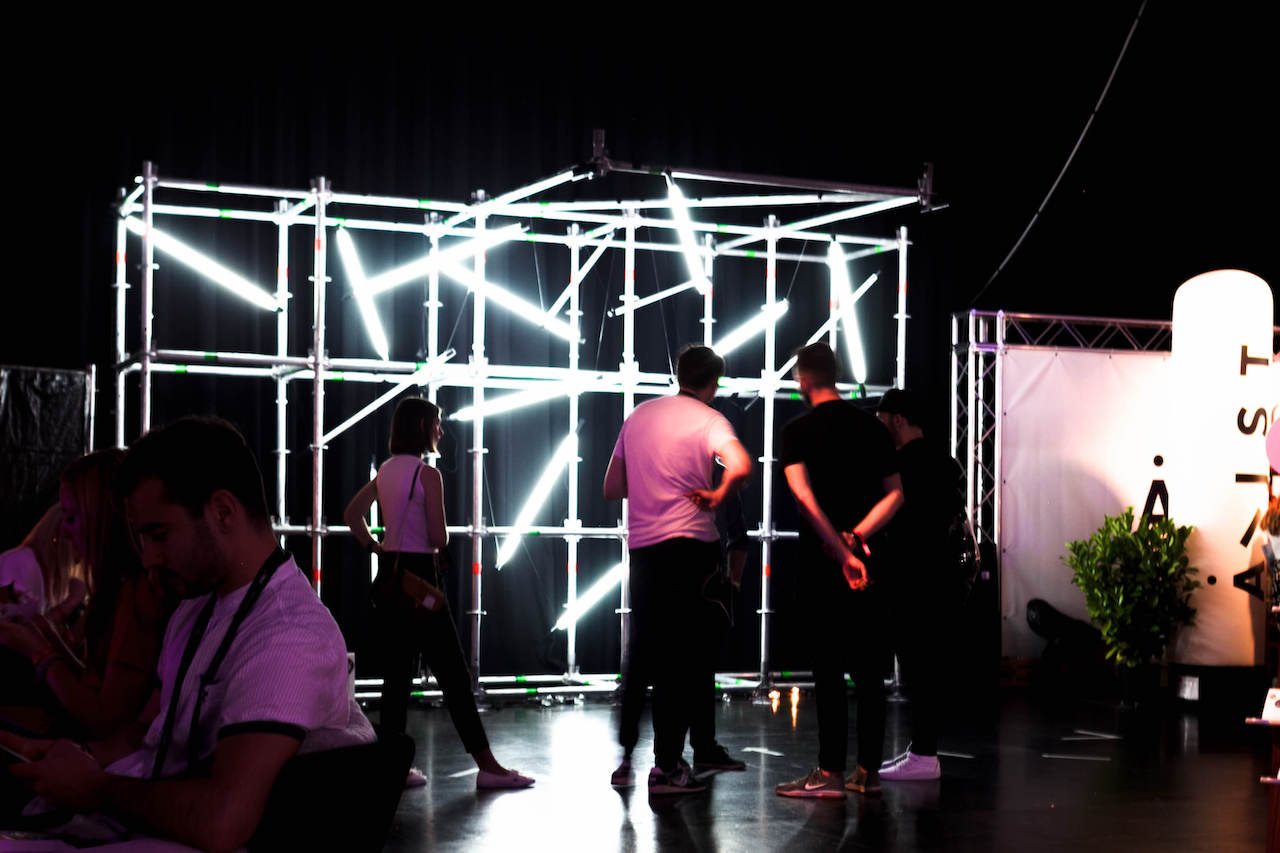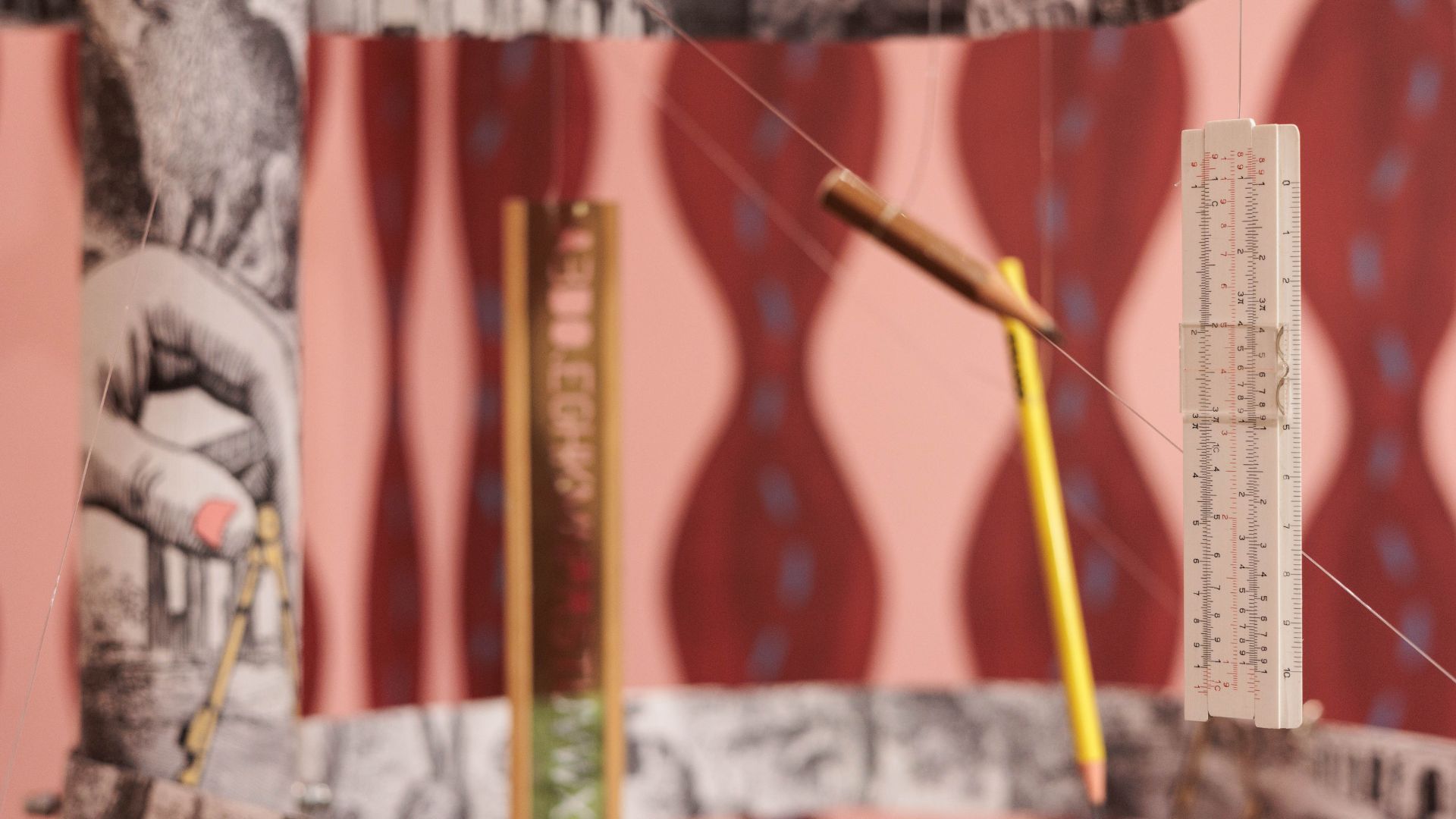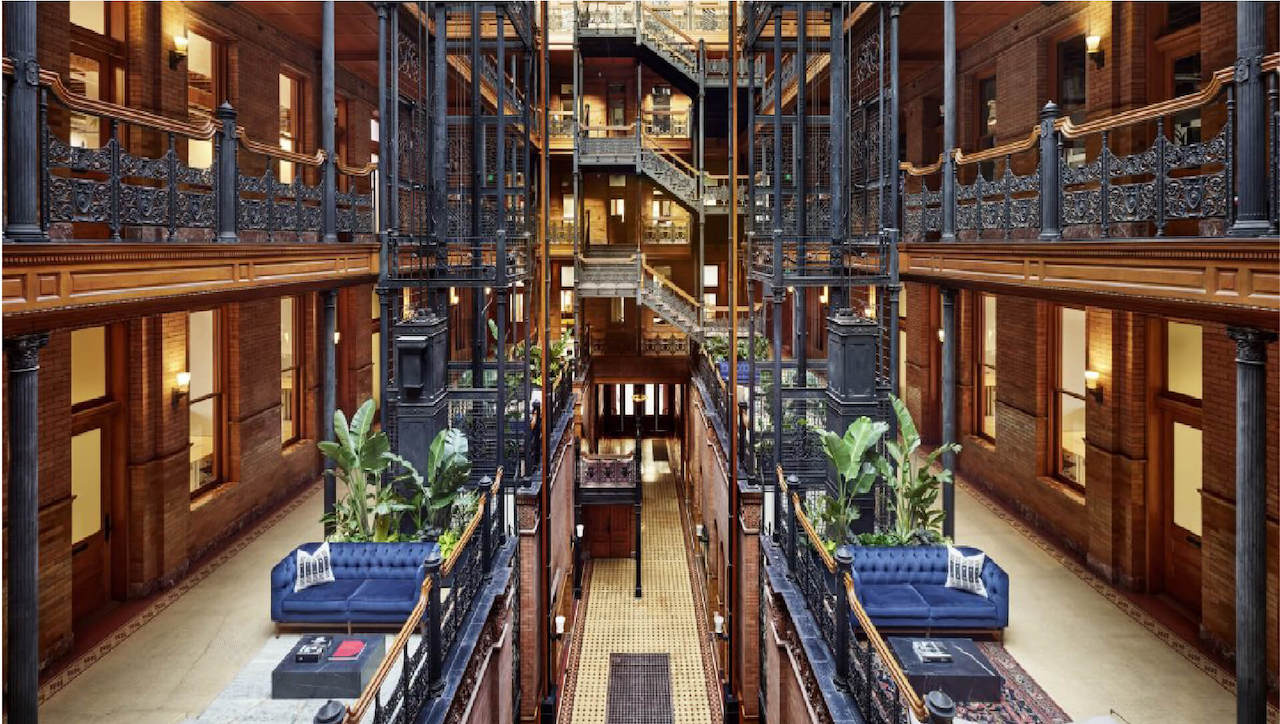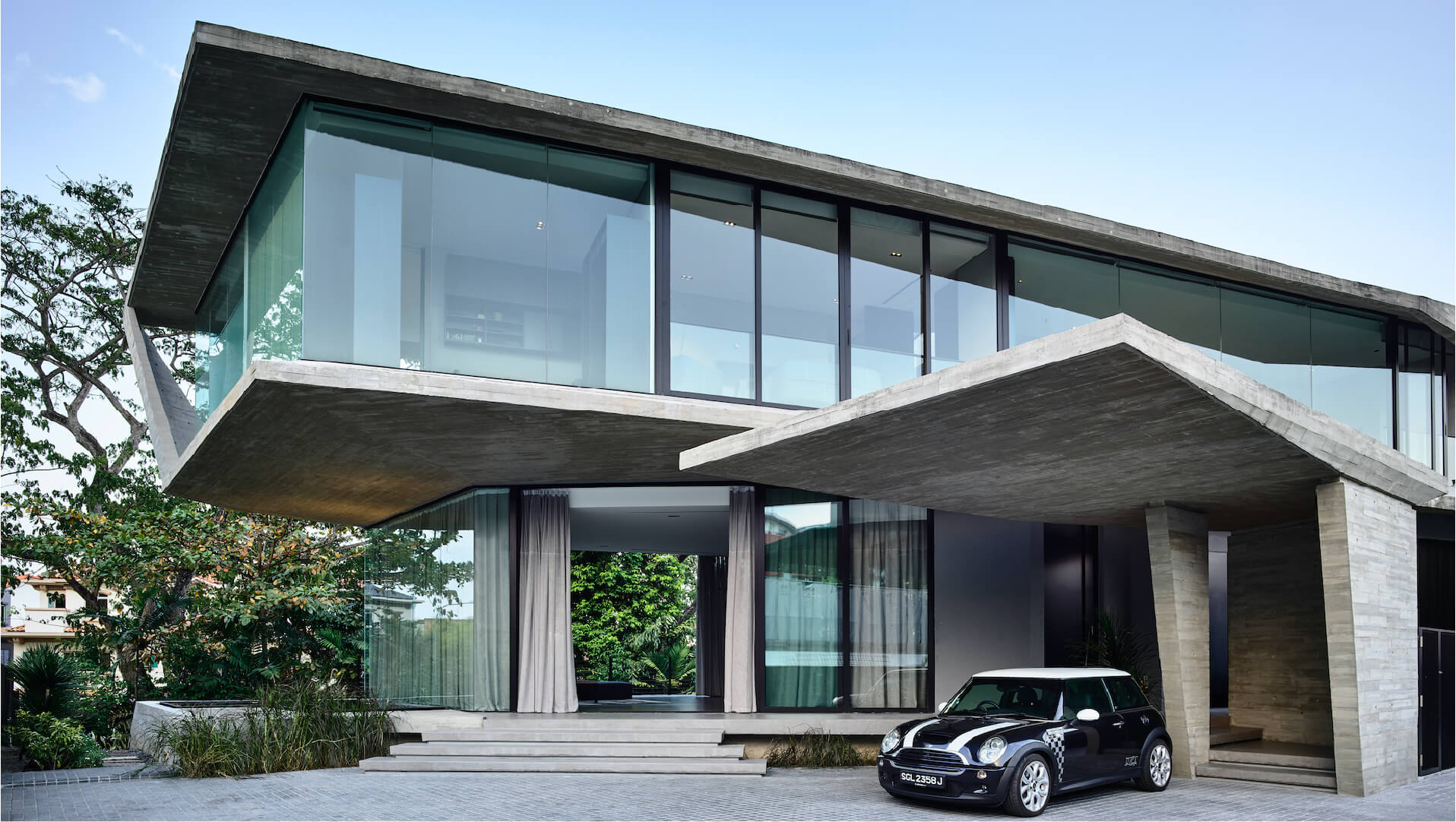From immersive installations to communication and business tools
Ninja Guru is a creative collective collaborating with artists, interaction designers, programmers, engineers, sculptors and makers
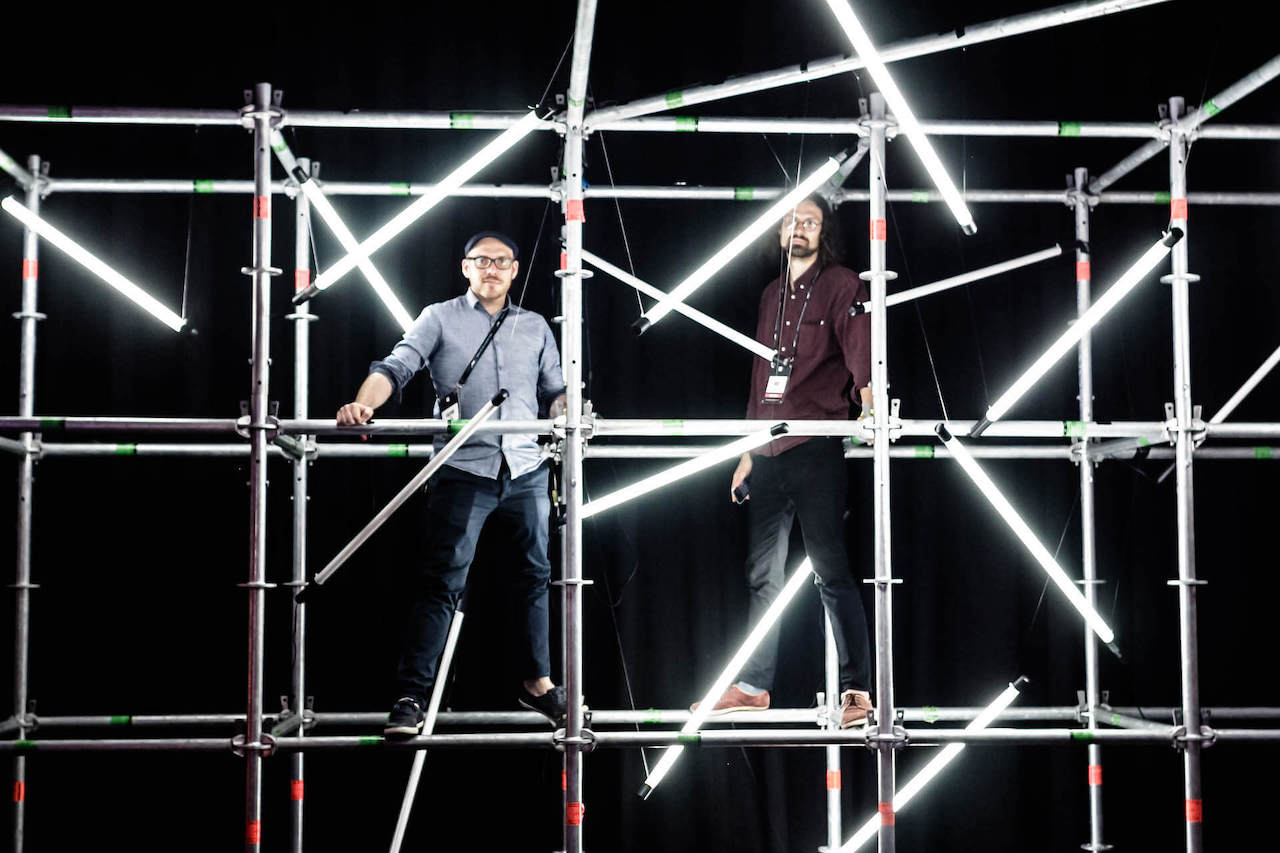
Ninja Guru is an art studio for interactive design based in Graz, Austria. They enjoy developing new interactive products and installations as well as providing various playful media solutions for promoting business.
What is interactive design? What does it mean ‘interactive’?
Speaking about interactive art and interactive design independently is very important to differentiate both. Nowadays, interactive design is closely connected to UIX design; while interactive art is the synergy of different art forms, which has an interesting and long developing history of its own.
The visual art pioneer and British artist Ernest Edmonds, in his definition of interactive art, writes: “Art becomes interactive when audience participation is an integral part of the artwork”.
Even though interactive design would not make sense without involving users, in this case, the different purposes for art and design play a remarkable role.
While interactive design tries to bridge the communication between the end-user and design object, whether we speak about a smartphone application or web page, it also sets a completely different role: using interactivity as a tool for creating an interesting and outstanding narration of an art installation or object.
The Polish professor and researcher Ryszard Kluszczynski mentions several forms of art, which over the years become parts of interactive art:
“I assume that interactive art is shaped mostly in five fields of artistic activities, connected in many ways with each other but still presenting certain differences. […] kinetic art, the art of action, installation art, the art of electronic media, and conceptual art.”
So ultimately, what does ‘interactive’ mean for the end-users? It means several interesting things:
- Our action gets feedback from an art installation or system, meaning a simple way of communication, a dialogue
- An interesting and more complex narration of the central message
- The immersive experience we get when interacting with an installation
All these elements combined force us, visitors, to change our role from observers to actors who get involved in the creative process.
Personal experience always played an important role and this is what visitors get from interactive art installations: being involved in the art process.
Interaction means bringing people closer and more involved with the product and the object, instead of letting them play the observer role.
A new way of communication
Communication means exchanging information and it can be achieved in different ways: verbal, nonverbal, written, visual. In regards to visual communication, for example, design and art represent strong media to convey a message through visual elements.
The Professor of cultural and media studies at Lodz University in Poland, Ryszard W. Kluszczynski, identifies two models of communication:
“The first one we should actually name: transmission, or influential transmission, since this model sees communication as a one-way transmission, as a process in which the sender has an impact on the receiver. This concept and its theoretical foundations were created by Shannon and Wearer (1949). […] The second model assumes that communication is an interaction.
In this perspective communication is seen as a negotiation and an exchange of views and ideas, that leads to enable meaning to be produced or understanding to occur . Communication understood as interaction has a dialogue-like structure and creates interconnections between individuals involved in it.”

Graphic design, for example, by using forms, figures and typography could reflect the first model of communication (one-way). The combination of UI/UX Design, for example in applications, refers to the second model of communication, considering the user’s needs and the improvement of their experience.
Designing interactive experiences and interactive installation meet the second way of communication by bringing the user to a central focus point through the interactivity.

The interaction occurs by playing, exploring and completely involving the user in this inter-communication experience.
And if communication is a central point in our everyday life, it covers a primary role business-wise as well. Interactivity design, in fact, lets you tell a story, deliver a message in a more effective and creative way becoming an interconnection point of the communication process.
How interactive design and art could help business
What is the main goal of a business? To grow by increasing the number of targeted customers and sell products more efficiently. What are the main difficulties businesses encounter on the way to this goal? First of all its communication and competition.
To win the war between competitors you have to stay innovative and creative and this is where interactivity comes into the game.

We know that interactive art has the magic power to involve people and give them personal experiences, it is a wonderful tool for shaping your own interesting and non-conventional narration.
By using game-based methods, interactive art involves customers in a new context and gives them the feeling of being part of the creation process.
Interactive art and design are already used by big companies who are not scared to experiment and invest in new technologies. From usage of sensors, which gives new life to sport shoes, to tracking systems that allow customers to see if the dress will fit even if they don’t go to the dressroom.

A shop’s window display is like an invitation to the store; it is the first impression customers will get from the shop. By using interactive window displays, stores invite customers to engage and use their social media (e.g. taking selfies, posting and sharing) to create business awareness.
All this helps customers satisfy their aesthetic thirst and for business to get new clients, more social media publicity and at the end to provide more sales of their products.







